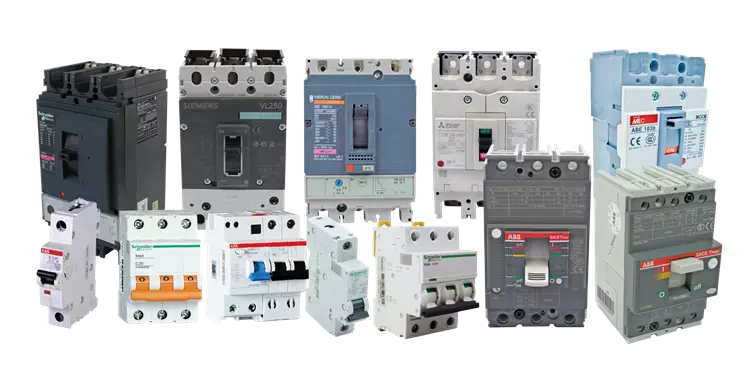FAQ & DIY Troubleshooting
Current Electric Systems
If a breaker trips for no apparent reason, there may a larger issue and an electrician should be contacted.
If the breakers in your electrical panel are labeled, you should be able to easily locate the tripped breaker. If not, look for a breaker switch resting halfway between the ‘on’ and ‘off’ position.
To reset the tripped breaker, move the switch to the ‘off’ position, then back to ‘on.’
How do I reset a tripped breaker?
If you’ve lost power to a portion of your home, head to your electrical panel and find the breaker labeled for that space. If your breakers aren’t labeled, examine the breakers and find one with a switch resting halfway between the on and off zones. Once located, flip the breaker switch to the off position, then to the on position. Do not try this more than once.
If this doesn’t solve the problem, you may have a more serious issue than an overloaded circuit and should call an electrician for troubleshooting.
Why has this light stopped working?
Start with the simplest solution first – if the fixture is plugged into a receptacle, and it is a GFCI outlet, test and reset it. Second, try a new bulb in the light fixture. Even new bulbs are sometimes damaged, so try two. If that doesn’t work, ensure that the breaker for that circuit is in the on position. If none of that works, you may have a dead receptacle, broken fixture, or more serious electrical issues at-hand.
How Do I Reset or Test a GFCI Receptacle?
If a GFCI outlet isn’t working, it is likely doing its job and protecting you from electrical shock. In most instances, you should be able to simply push the reset button. It should make an audible ‘click.’
When a GFCI trips, all other GFCI outlets in the room should be tested to ensure they are all working and protecting you from electrocution.
- Push the test button.
- Once the reset button pops out plug in a device (ex: hair dryer) and turn it on.
- If the device doesn’t work when the GFCI is in test mode, your GFCI is working correctly.
- If the device works when the GFCI is in test mode, please call an electrician – it is not safe.
Why are these lights flickering?
Why are bulbs in this fixture burning out frequently?
What does this mystery wall switch do?
Your mystery switch likely operates an outlet on a nearby receptacle. Try plugging in a lamp in nearby receptacles and operating the switch

Current Electric Systems
How are projects priced?
Our pricing is different – we’re data driven and transparent; project complexity varies on several factors. Due to the nuanced nature of every project, we do not offer menu pricing or flat rates. We provide itemized quotes and invoicing, because we want to show you what costs what and why it does.
We offer a handful of transparent, itemized pricing models. For quick turnaround work, we charge Time & Materials; for quoted work, we offer Rough or Firm Quotes depending upon the project scope and uncertainties. A Time & Materials price sheet is provided before quick turnaround work is scheduled, and quotes are itemized with materials listed. Most quoted work requires a down payment, and larger projects often have progress payments.
Do I need to be home during a scheduled visit?
If you are scheduled for a site survey, we require a decision-maker be on-site to discuss the project scope. We can perform most scheduled work without someone on-site, as long as entry is provided with a code or key in advance.
How Can I Protect My Home From Power Surges?
Whole house surge protection is a two-step system. In addition to surge protectors on each outlet, the electrical panel is installed with a surge protection device.
This will protect against utility electrical spikes and “sacrifice” itself to mitigate the damaging effects of lighting; a small cost for a huge insurance benefit. We can design, supply, and install whole-house surge protectors. Visit this page for more information.
What forms should I fill out for an EV Charger install?
For special EV rates, Xcel requires customers to fill out this application.
If you are having a 2nd meter installed, Xcel requires additional service be applied for through this application, which we can assist you with filling out.
Is my electrical panel a fire hazard?
If you have a Federal Pacific or Zinsco electrical panel or traditional fuse boxes, you have a potential dangerous situation in your home. These types of panels are a liability issue; we do not add or modify circuits or replace receptacles on these units. In some instances, we may replace light fixtures and light switches connected to these panels.
There may be other electricians who will work on these, but Current Electric Systems will not. If you do find an electrician willing to work on one of these panels, please ensure that a permit is pulled and inspected by a state approved electrical inspector – it is a potentially dangerous situation.
Learn more at: IsMyPanelSafe.com
Most homeowner insurance companies will discount a policy when you update these panels. Ask your insurance agent for information about discounts for service changes.


In 2020, new requirements are coming for Arc Fault Circuit Interrupter (AFCI) protections. AFCIs are designed to detect and respond to potentially dangerous electrical arc faults, protecting homes from electric fires.
